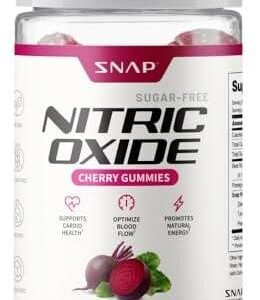Introduction
In an era where health and wellness have taken center stage, the importance of a well-structured fitness training program cannot be overstated. Whether you are a seasoned athlete looking to refine your regimen or a newcomer embarking on your fitness journey, understanding the fundamentals of effective program design is critical to achieving optimal results. This comprehensive guide aims to equip you with the necessary tools and knowledge to create a tailored fitness training program that aligns with your specific goals, physical capabilities, and lifestyle.
Designing an effective fitness program involves much more than simply incorporating a series of exercises; it requires a strategic approach grounded in principles of exercise science. Factors such as individual fitness levels, personal objectives, injury history, and available resources must all be considered to ensure a holistic and sustainable plan. Furthermore, the dynamic nature of fitness necessitates adaptability, requiring the program to evolve in response to your progress and changes in goals.
Throughout this guide, we will delve into the essential components of program design, including goal setting, exercise selection, progression strategies, and recovery methods. We will also explore the importance of incorporating various training modalities, the role of nutrition, and the psychological aspects of fitness adherence. By the end of this comprehensive overview, you will possess the expertise to develop a fitness training program that not only is effective but also fosters a lifelong commitment to health and well-being. Join us as we embark on this transformative journey towards designing a fitness program that meets your unique aspirations and enhances your overall quality of life.
Table of Contents
- Understanding Individual Fitness Goals and Assessing Current Fitness Levels
- Incorporating Varied Training Modalities for Balanced Development
- Establishing a Structured Progression Plan to Ensure Consistent Improvement
- Implementing Recovery Strategies and Nutrition for Optimal Performance
- Wrapping Up
Understanding Individual Fitness Goals and Assessing Current Fitness Levels
Setting personal fitness goals is a crucial step in designing a personalized training program. Each individual possesses unique aspirations, which can range from enhancing cardiovascular endurance to building muscular strength or achieving weight loss. To align your efforts with your desired outcomes, it is essential to establish SMART goals—Specific, Measurable, Achievable, Relevant, and Time-bound. Consider the following factors when defining your fitness objectives:
- Current Fitness Level: Assess your starting point to create realistic goals.
- Time Commitment: Determine how many hours a week you can dedicate to training.
- Health Considerations: Account for any pre-existing conditions or injuries.
- Personal Motivation: Reflect on what drives you to stay committed.
Once your goals are set, evaluating your current fitness level is essential for structuring an effective training plan. You can utilize various assessments to gauge your baseline fitness, such as strength tests, aerobic capacity evaluations, and flexibility assessments. Here’s a simple table to help you track these evaluations:
| Fitness Assessment | Method | Frequency |
|---|---|---|
| Push-Ups | Max in one minute | Every 4 weeks |
| 1-Mile Run | Time to complete | Every 6 weeks |
| Sit and Reach | Distance reached | Every 8 weeks |
Utilizing these assessments allows you to measure progress effectively and adjust your program as needed, ensuring that you remain aligned with your fitness aspirations while continuously challenging yourself.
Incorporating Varied Training Modalities for Balanced Development
To achieve a well-rounded fitness program, it’s essential to incorporate a range of training modalities that cater to various aspects of physical fitness. This approach not only enhances overall performance but also reduces the risk of injury and keeps participants engaged. When designing a balanced training regimen, consider integrating the following modalities:
- Strength Training: Implements exercises like weight lifting, bodyweight workouts, and resistance training to enhance muscle mass and endurance.
- Cardiovascular Training: Activities such as running, cycling, or swimming elevate heart rate, improving cardiovascular health and stamina.
- Flexibility and Mobility Work: Incorporates stretching routines and yoga to enhance joint flexibility and alleviate tension.
- Functional Training: Focuses on exercises that mimic everyday tasks to improve balance, coordination, and overall functional strength.
When creating a diverse training program, it can be beneficial to follow a structured schedule that allows for adequate recovery while maximizing the benefits of each modality. Below is a simple table to illustrate a sample weekly schedule that aligns various training types:
| Day | Training Focus |
|---|---|
| Monday | Strength Training |
| Tuesday | Cardiovascular Training |
| Wednesday | Flexibility & Mobility |
| Thursday | Functional Training |
| Friday | Strength Training |
| Saturday | Cardiovascular Training |
| Sunday | Rest or Light Activity |
Establishing a Structured Progression Plan to Ensure Consistent Improvement
To achieve long-lasting results in any fitness training program, it is essential to have a structured progression plan that accommodates individual goals and encourages consistent improvement. A well-thought-out plan enables individuals to continually challenge themselves while minimizing the risk of injury or burnout. Begin by setting specific, measurable, achievable, relevant, and time-bound (SMART) objectives to provide clear direction. This could involve gradually increasing weights, adjusting workout durations, or incorporating new exercise modalities every few weeks based on performance feedback.
Implementing a phased approach can further enhance the effectiveness of your plan. Consider establishing distinct stages, such as an initial assessment, progressive overload, and result evaluation. Within each phase, outline targeted workouts and milestones to aim for, ensuring variety to keep motivation high. A sample breakdown might include:
| Phase | Duration | Objectives |
|---|---|---|
| Assessment | 1 Week | Identify baselines |
| Initial Training | 4 Weeks | Focus on form and build foundational strength |
| Progressive Overload | 6 Weeks | Increase intensity and complexity of workouts |
| Evaluation | 1 Week | Review progress and adjust goals |
By monitoring progress and revisiting these phases regularly, individuals can stay engaged with their training, making necessary adjustments that align with their evolving fitness journey. Moreover, regular evaluations allow for celebrating achievements, boosting motivation and commitment to the program.
Implementing Recovery Strategies and Nutrition for Optimal Performance
Recovery strategies are essential for maintaining peak performance and overall health. Implementing a variety of techniques not only aids in muscle recovery but also enhances mental clarity and resilience. Consider incorporating the following methods into your routine:
- Active Recovery: Engage in low-intensity activities like walking, swimming, or yoga to promote blood flow without overexerting your body.
- Rest Days: Schedule regular rest days tailored to your workout intensity to allow your muscles adequate time to repair.
- Hydration: Ensure you drink enough water throughout the day to prevent dehydration and support metabolic processes.
- Massage Therapy: Regular massages can alleviate muscle tension and improve circulation, contributing to recovery.
Nutrition plays a pivotal role in recovery and performance enhancement. Fueling your body with the right nutrients post-exercise can significantly speed up recovery times and improve subsequent workouts. Consider the following nutritional strategies:
| Food Type | Key Nutrients | Benefits |
|---|---|---|
| Lean Proteins | Amino Acids | Support muscle repair and growth. |
| Complex Carbohydrates | Glucose | Replenish glycogen stores for energy. |
| Healthy Fats | Omega-3 Fatty Acids | Reduce inflammation and promote heart health. |
| Fruits & Vegetables | Vitamins & Antioxidants | Boost immunity and aid in recovery. |
By prioritizing both recovery strategies and proper nutrition, athletes and fitness enthusiasts can optimize their training programs, ensuring sustained performance and longevity in their fitness journey.
Wrapping Up
designing an effective fitness training program is both an art and a science, necessitating a thoughtful approach that accommodates individual goals, fitness levels, and personal preferences. This comprehensive guide has equipped you with the foundational knowledge required to create a program that not only optimizes physical performance and health but also cultivates a sustainable and enjoyable fitness journey.
As you embark on the process of program design, remember that flexibility and adaptability are key. Regular assessments of progress and adjustments to your training regimen will ensure continued efficacy and motivation. Encourage feedback, foster accountability, and maintain a positive mindset, as these elements are crucial to overcoming obstacles and achieving success.
Furthermore, consider the integration of diverse training modalities and recovery strategies, highlighting the importance of not just physical exertion but also holistic well-being. Engage in ongoing education about fitness trends, nutritional strategies, and recovery techniques to continually refine your program.
as you implement your training program, embrace the journey. The path to fitness is not merely a destination but a lifelong commitment to health, resilience, and personal growth. Whether you’re an experienced trainer or a fitness novice, the principles outlined in this guide will serve as a solid framework to enhance your approach to fitness. As you progress, remain open to exploration and innovation, adapting your program to your evolving needs and aspirations.
We wish you success in your fitness endeavors and hope this guide empowers you to develop a training program that resonates with your unique lifestyle, leading to lasting results and enhanced quality of life. Thank you for reading, and may your fitness journey be fulfilling and energizing.




